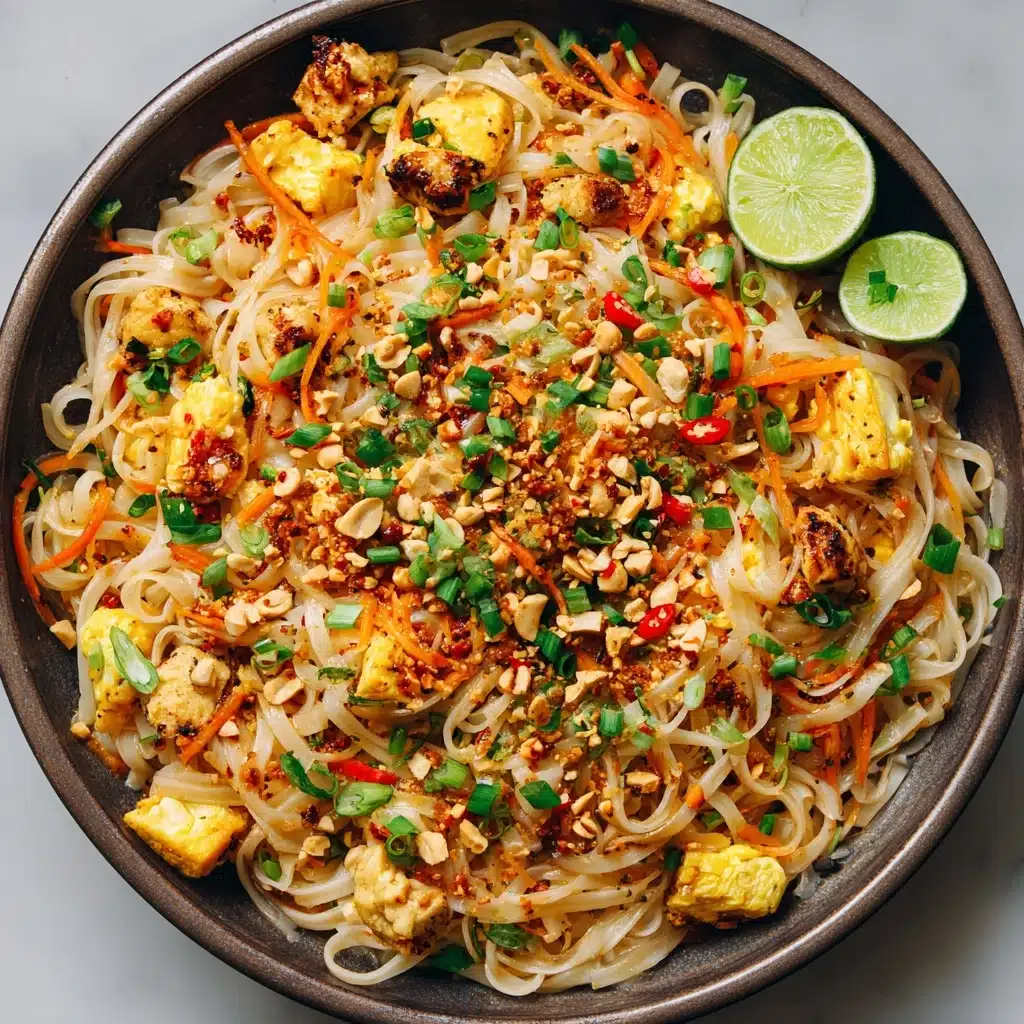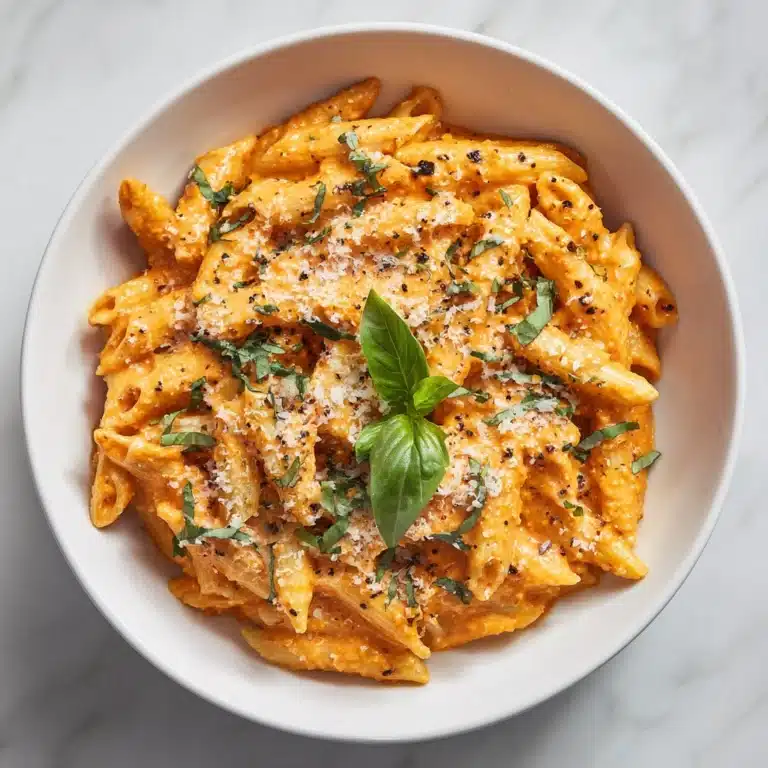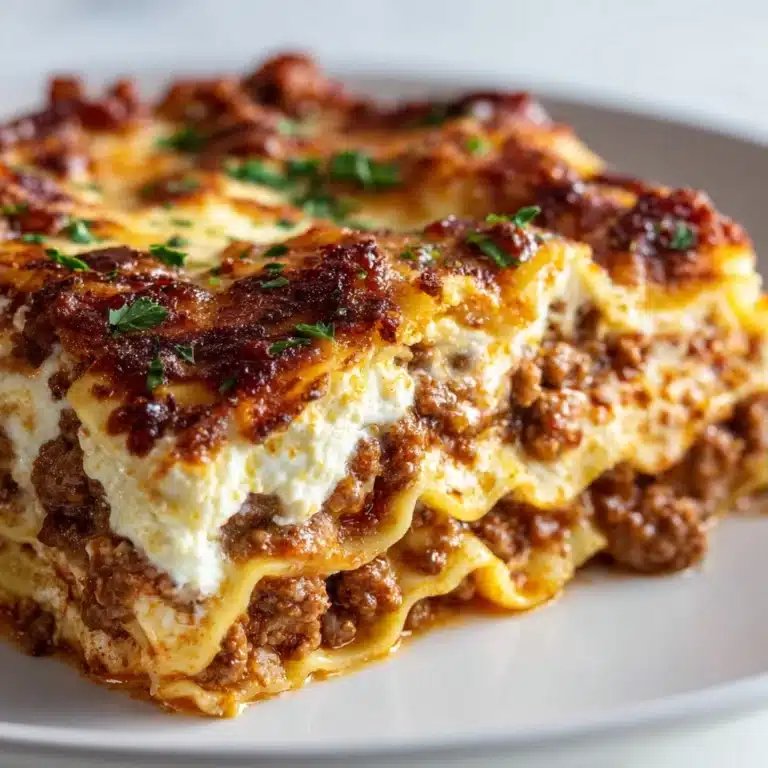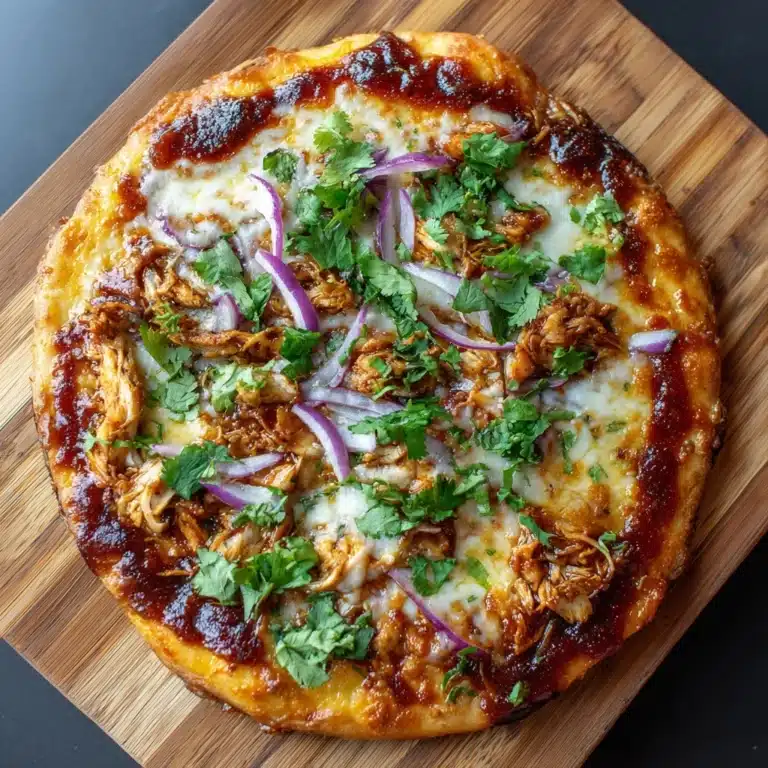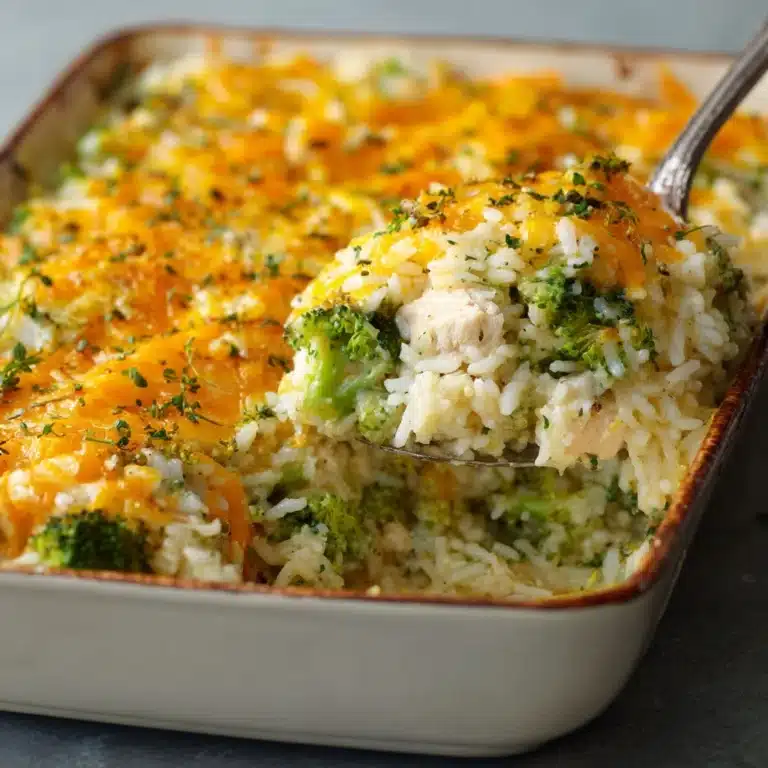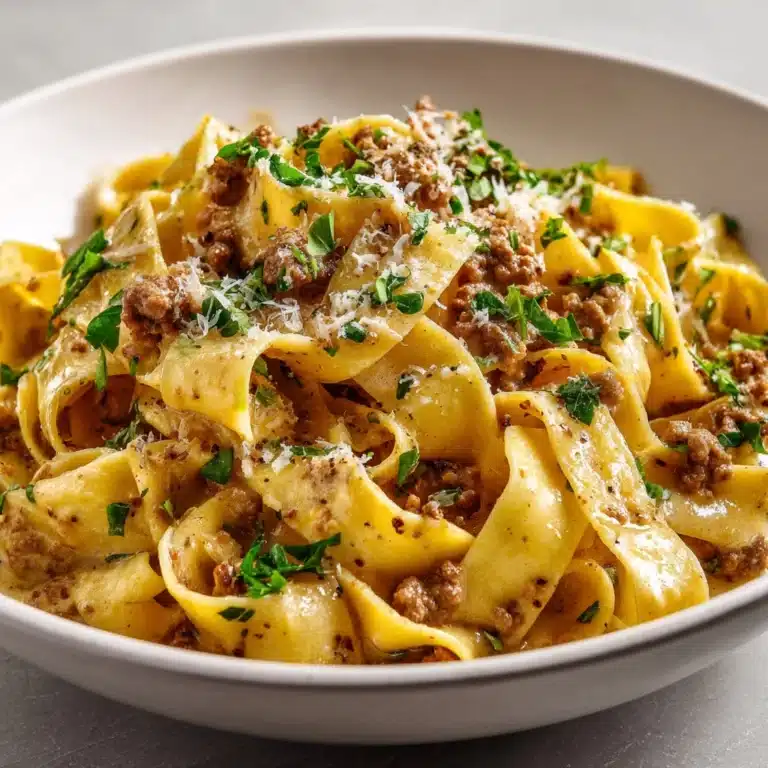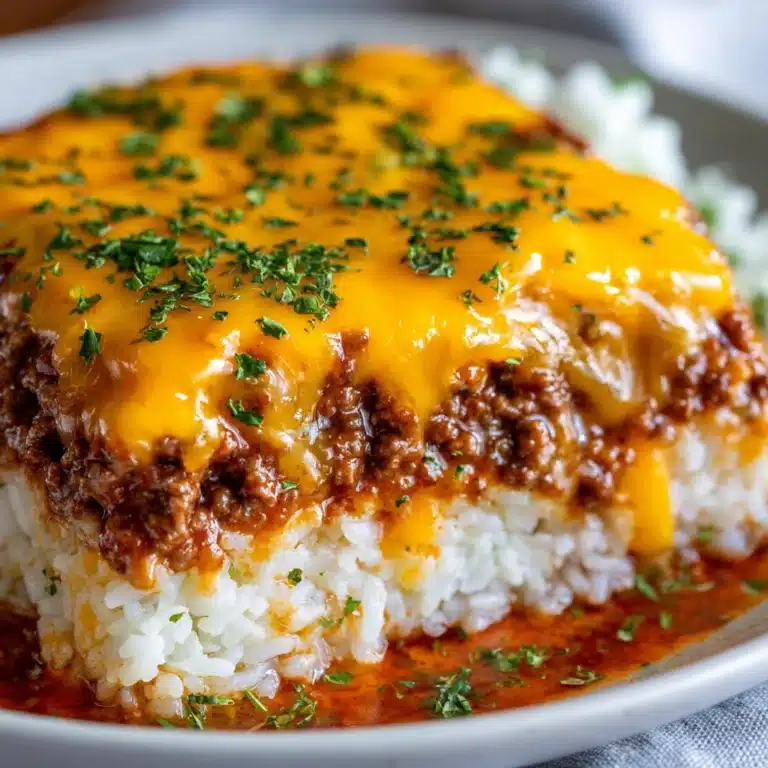If there’s ever been a dish that perfectly captures the heart and soul of Thai street food, it has to be Pad Thai. This iconic noodle stir-fry serves up a magical harmony of savory, tangy, sweet, and spicy flavors—with chewy rice noodles, juicy shrimp or chicken, fluffy scrambled eggs, piles of crisp bean sprouts, and an irresistible shower of peanuts and fresh herbs. Pad Thai is my go-to when I’m craving serious comfort with a twist, and I promise, once you master it at home, there’s no looking back!
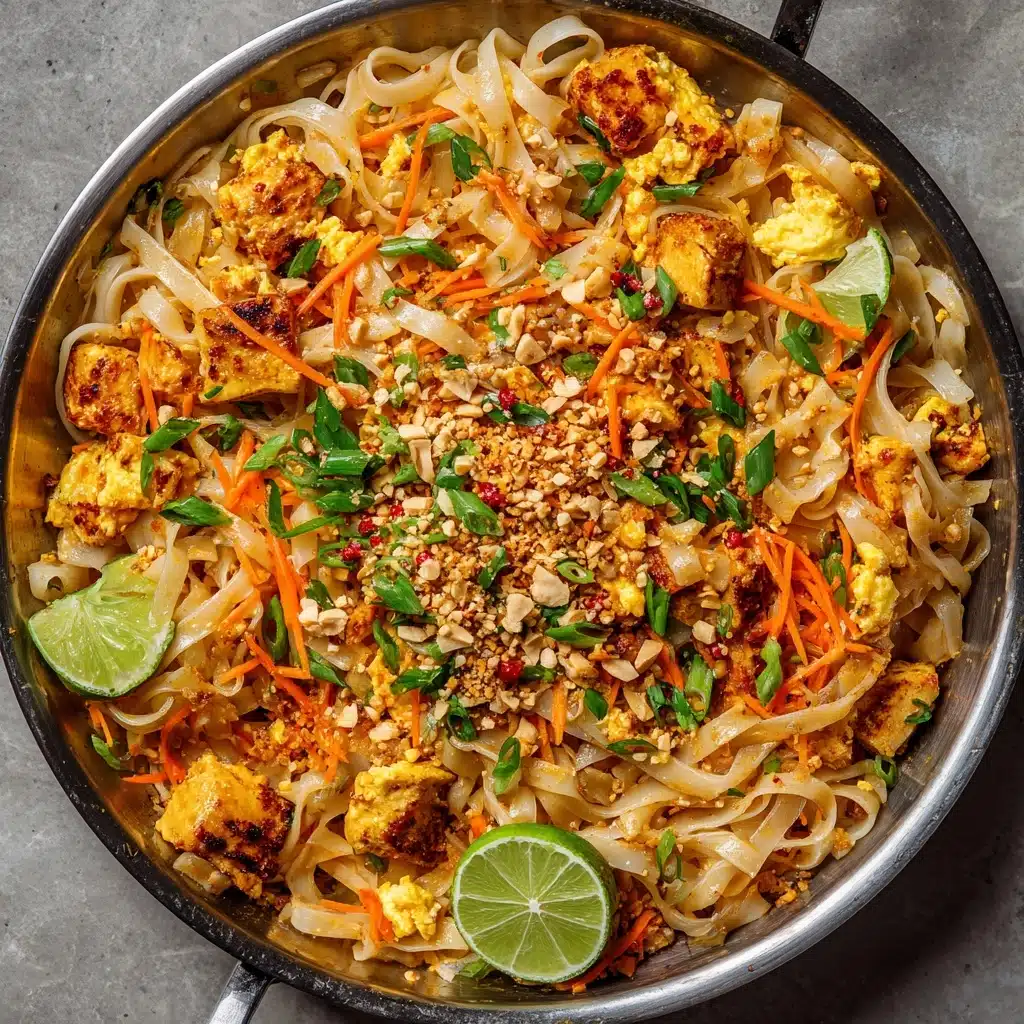
Ingredients You’ll Need
The irresistible flavor and texture of Pad Thai comes down to a handful of simple, yet essential, ingredients. Each brings something unique to the dish, so don’t skip out—let’s make every bite count!
- Rice noodles: These flat, chewy noodles soak up all the amazing sauce and create that classic Pad Thai texture.
- Vegetable oil: Gives you the perfect glossy stir-fry without overpowering the natural flavors.
- Garlic: Don’t be shy! Garlic adds the unmistakable savory backbone to your Pad Thai.
- Shallot: The subtle sweetness of shallot rounds out the dish and upgrades your aromatics game.
- Eggs: Lightly scrambled eggs bring creaminess and extra protein to every bite.
- Shrimp or chicken: Pick your favorite (or go half-and-half!) for a hearty complement to the noodles.
- Bean sprouts: The crunch here is non-negotiable — so fresh and lively.
- Green onions: A pop of color and a mild oniony bite; slice them on the diagonal for flair.
- Crushed roasted peanuts: Salty, nutty, and irresistible—they’re the finishing touch that makes Pad Thai sing.
- Tamarind paste: This provides that vital tang and depth (find it at Asian grocers, or substitute lime juice in a pinch).
- Fish sauce: For that true Southeast Asian umami kick; soy sauce works for a vegetarian swap.
- Palm sugar or brown sugar: Balances out the tang and salt with a mellow sweetness.
- Lime juice: Pad Thai always needs a fresh, zippy finish—a squeeze of lime wakes everything up.
- Chili powder (optional): Add some or a lot, depending on how spicy you like it!
- Fresh cilantro and lime wedges (for garnish): These add color, aroma, and a burst of freshness at the end.
How to Make Pad Thai
Step 1: Prep the Sauce
In a small bowl, whisk together your tamarind paste, fish sauce, sugar, lime juice, and chili powder (if you like it hot!). This sauce is truly the soul of Pad Thai—the balance of sour, salty, sweet, and spicy will set the mood for every noodle. Prepping it first makes sure you won’t scramble around while the stir-fry comes together fast and furious.
Step 2: Sauté Aromatics
Heat up your trusty wok or skillet over medium-high heat and pour in the vegetable oil. Add the minced garlic and sliced shallot, stirring constantly for about a minute, just until everything is fragrant. This aromatic base will flavor every layer of your Pad Thai noodles.
Step 3: Scramble the Eggs
Push the garlic and shallot over to one side of your pan, then pour in the lightly beaten eggs. Gently scramble them until just set—they should remain soft and a little creamy. Think of them as golden little nuggets scattered through your noodles!
Step 4: Cook the Protein
Add your shrimp or chicken (or a mix of both!) into the pan. Stir-fry with the eggs and aromatics until just cooked through—shrimp will turn pink and opaque, and chicken should no longer be pink in the center. If using tofu, add it now and let it crisp up on each side.
Step 5: Add Noodles and Sauce
Toss in your soaked and drained rice noodles, immediately pouring the sauce all over the top. Use tongs or two forks to toss everything together, coating the noodles thoroughly. Keep the movement lively—this helps prevent sticking and ensures flavor in every strand. Cook for 2-3 minutes, until the noodles are glossy and just tender.
Step 6: Final Stir and Veggies
Right at the end, add the bean sprouts and green onions. Give the mixture one last toss to warm the veggies but keep them crisp and bright. Remove your pan from the heat, because Pad Thai is ready to be served!
How to Serve Pad Thai
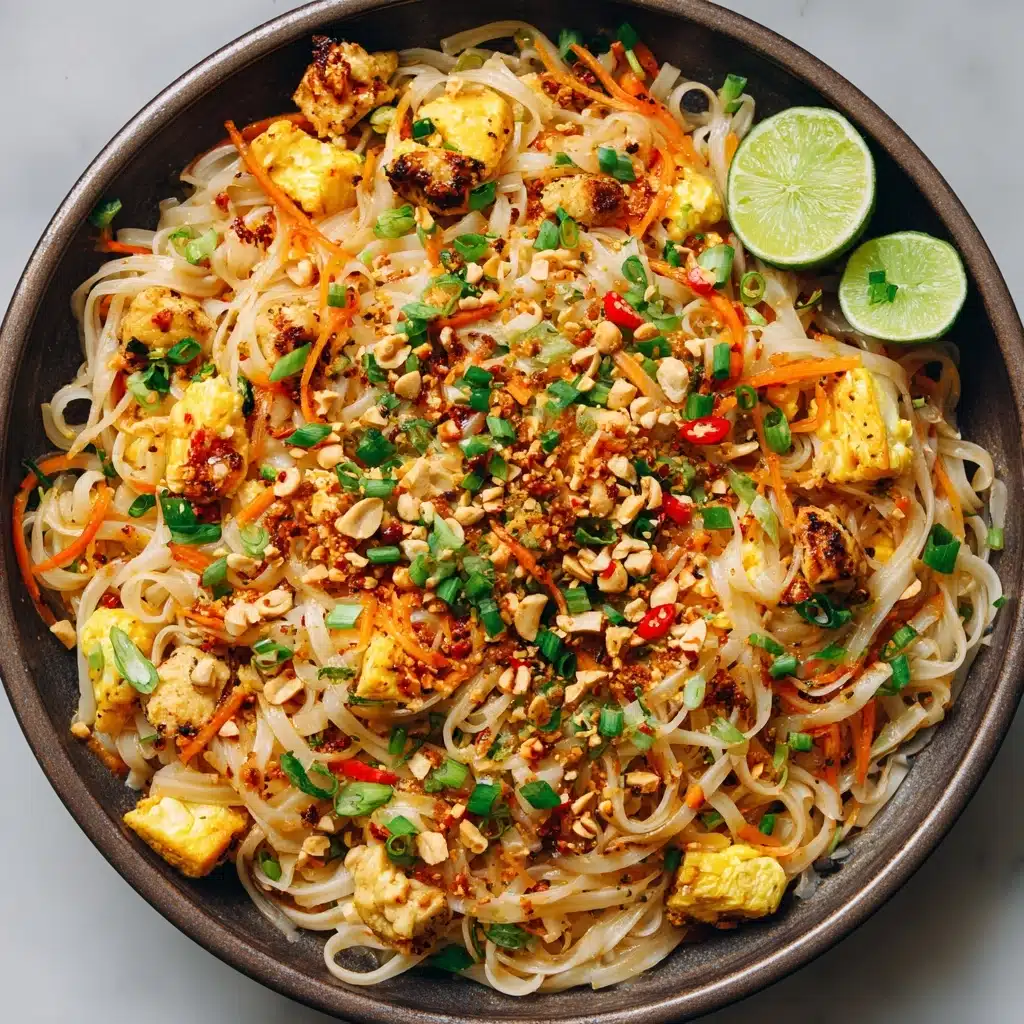
Garnishes
The classic Pad Thai experience isn’t complete without a mountain of toppings—scatter on a generous handful of crushed peanuts for crunch, a sprinkling of fresh chopped cilantro for garden-fresh aroma, and lime wedges on the side. Let everyone squeeze some lime just before digging in; it’s a simple but brilliant burst of flavor.
Side Dishes
Pad Thai is already a superstar on its own but adding a crisp Thai cucumber salad or a small bowl of Tom Yum soup makes for a beautiful, balanced meal. A side of pickled veggies or even extra bean sprouts in a small dish offer that restaurant-style spread you’ll absolutely love.
Creative Ways to Present
Bring your Pad Thai to the next level by serving it in banana leaves for a real street food vibe, or arrange your garnishes in little ramekins so everyone can build their own perfect bowl. For dinner parties, try piling the noodles high on a large platter, scatter with edible flowers, and let guests help themselves.
Make Ahead and Storage
Storing Leftovers
If you find yourself with extra Pad Thai, transfer it to an airtight container and pop it in the fridge. It’ll stay tasty for up to three days, and sometimes the flavors get even deeper overnight!
Freezing
Pad Thai can be frozen, but for best results, skip garnishes and only freeze the noodles and proteins. Seal them in a freezer-safe bag or container, and enjoy within a month. Thaw overnight in the refrigerator before reheating for lunch or dinner.
Reheating
To bring your Pad Thai back to life, toss it in a hot skillet or wok with a splash of water or oil. This keeps the noodles from drying out or turning mushy. A microwave works in a pinch, but stovetop reheating lets you revive some crisp and freshness.
FAQs
What makes Pad Thai sauce so special?
The secret is in the unique blend of tamarind paste, fish sauce, palm or brown sugar, and fresh lime juice. This quartet creates a balance of sweet, tangy, salty, and slightly sour—flavors that define Pad Thai as unforgettable comfort food.
Can I make Pad Thai vegetarian or vegan?
Absolutely—simply swap out the fish sauce for soy sauce or tamari, and use tofu in place of shrimp or chicken. Add extra veggies for color and crunch, and you’ll have a delicious plant-based Pad Thai to enjoy.
What is the best way to soak rice noodles?
Let the rice noodles soak in warm (not boiling) water for about 20 minutes until they’re just pliable but not mushy. They should finish cooking in the pan with the sauce, absorbing all those wonderful flavors as they go.
Can I adjust the spiciness?
Of course! Start with a pinch of chili powder, then let diners add more to taste at the table. Some love it fiery, while others prefer their Pad Thai mellow and sweet—it’s all up to you.
Why do my Pad Thai noodles stick together?
This usually happens if the noodles are over-soaked or if there isn’t enough sauce/oil in the pan. Make sure to soak them only until pliable and toss well with sauce in a hot pan for that perfect, tangle-free texture.
Final Thoughts
If you’ve ever wished you could recreate the magic of your favorite Thai restaurant at home, Pad Thai is your ticket. With each colorful bite, you’ll experience all the bold flavors and textures you crave—right from your own kitchen. Give it a try and prepare to wow your taste buds and anyone lucky enough to share your table!
Print
Pad Thai Recipe
- Total Time: 30 minutes
- Yield: 4 servings
- Diet: Non-Vegetarian
Description
Learn how to make a delicious Pad Thai with this easy recipe. Perfect for a quick weeknight dinner, this flavorful dish combines rice noodles, shrimp (or chicken), and a savory-sweet sauce topped with crunchy peanuts.
Ingredients
Rice Noodles:
8 ounces rice noodles, soaked in warm water for 20 minutes and drained
Stir-Fry:
2 tablespoons vegetable oil, 2 cloves garlic (minced), 1 shallot (thinly sliced), 2 large eggs (lightly beaten), 8 ounces shrimp or chicken (peeled and deveined or sliced), 1 cup bean sprouts, 3 green onions (sliced), 1/4 cup crushed roasted peanuts
Sauce:
2 tablespoons tamarind paste, 3 tablespoons fish sauce, 2 tablespoons palm sugar or brown sugar, 1 tablespoon lime juice, 1/2 teaspoon chili powder (optional)
Garnish:
fresh cilantro and lime wedges
Instructions
- Prepare the Sauce: Whisk together tamarind paste, fish sauce, sugar, lime juice, and chili powder in a small bowl.
- Stir-Fry: Heat vegetable oil in a large skillet or wok. Sauté garlic and shallot until fragrant. Add eggs and scramble. Cook shrimp or chicken. Add soaked noodles and sauce. Cook until tender.
- Finish: Stir in bean sprouts and green onions. Garnish with peanuts, cilantro, and lime wedges.
Notes
- For a vegetarian option, use tofu instead of shrimp or chicken.
- Substitute soy sauce for fish sauce if desired.
- Adjust chili powder to taste.
- Prep Time: 15 minutes
- Cook Time: 15 minutes
- Category: Main Course
- Method: Stovetop
- Cuisine: Thai
Nutrition
- Serving Size: 1 cup
- Calories: 350
- Sugar: 10g
- Sodium: 900mg
- Fat: 12g
- Saturated Fat: 3g
- Unsaturated Fat: 8g
- Trans Fat: 0g
- Carbohydrates: 45g
- Fiber: 3g
- Protein: 20g
- Cholesterol: 130mg
